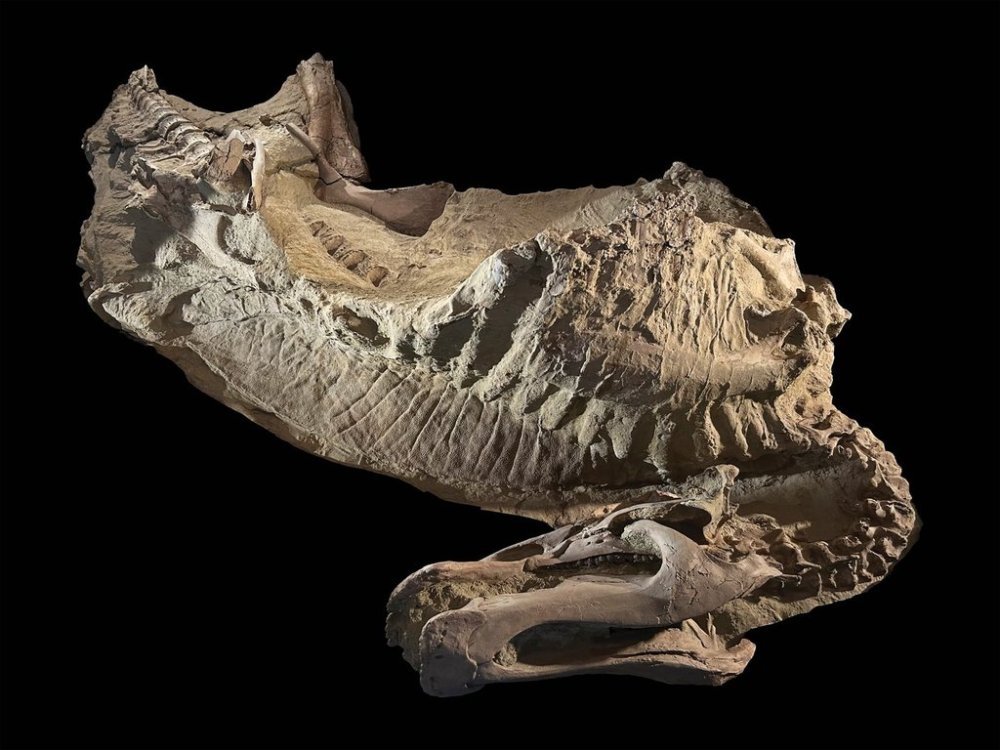Rare dinosaur mummies help scientists recreate their prehistoric lives
Advertisement
Read this article for free:
or
Already have an account? Log in here »
To continue reading, please subscribe:
Monthly Digital Subscription
$1 per week for 24 weeks*
- Enjoy unlimited reading on winnipegfreepress.com
- Read the E-Edition, our digital replica newspaper
- Access News Break, our award-winning app
- Play interactive puzzles
*Billed as $4.00 plus GST every four weeks. After 24 weeks, price increases to the regular rate of $19.00 plus GST every four weeks. Offer available to new and qualified returning subscribers only. Cancel any time.
Monthly Digital Subscription
$4.75/week*
- Enjoy unlimited reading on winnipegfreepress.com
- Read the E-Edition, our digital replica newspaper
- Access News Break, our award-winning app
- Play interactive puzzles
*Billed as $19 plus GST every four weeks. Cancel any time.
To continue reading, please subscribe:
Add Free Press access to your Brandon Sun subscription for only an additional
$1 for the first 4 weeks*
*Your next subscription payment will increase by $1.00 and you will be charged $16.99 plus GST for four weeks. After four weeks, your payment will increase to $23.99 plus GST every four weeks.
Read unlimited articles for free today:
or
Already have an account? Log in here »
NEW YORK (AP) — Researchers have unearthed a spooky pair of dinosaur mummies that seem to have been preserved in an unexpected way.
These dinosaur remains are different from the wrapped mummies of Egypt or natural human mummies that get accidentally preserved in bogs or deserts. Mummified dinosaurs are so old that their skin and soft tissues fossilize. Scientists use these rare remnants, along with dinosaur bones, to recreate what these prehistoric creatures may have looked like.
Scientists have been uncovering dinosaur mummies for over a century. Some were buried quickly after dying, while others sank into bodies of water or dried out.

Many of them — including a duck-billed dinosaur mummy discovered in 1908 — hail from an area in eastern Wyoming. In the new study, scientists returned to this so-called mummy zone and found new remains, including the mummy of a duck-billed dinosaur that was only a few years old when it died.
“This is the first juvenile of a dinosaur that really is mummified,” said Paul Sereno, a University of Chicago paleontologist who was involved in the discovery.
Surprisingly, the new mummies seem to have been preserved without any evidence of fossilized skin. Instead, they left impressions of their skin and scales on a thin layer of clay that hardened with help from microbes.
This style of mummification has preserved other organisms before, but scientists didn’t think it could happen on land. It’s possible that other mummies found at the Wyoming site could have formed in a similar way, Sereno said.
Scientists used these clay templates to paint a clearer picture of what the duck-billed dinosaurs might have looked like when they were alive, including spikes on their tail and hooves on their feet. The new findings were published Thursday in the journal Science.
Understanding how dinosaur mummies form can help scientists uncover more of them. It’s important to look not just for dinosaur bones, but also for skin and soft tissue impressions that could go unstudied or even picked away, said Mateusz Wosik, a Misericordia University paleontologist who wasn’t involved with the discovery.
More mummies offer more insights into how these creatures grew and lived.
“Every single time we find one, there’s such a treasure trove of information about these animals,” said Stephanie Drumheller, a vertebrate paleontologist at the University of Tennessee, Knoxville, who wasn’t part of the study.
___
The Associated Press Health and Science Department receives support from the Howard Hughes Medical Institute’s Department of Science Education and the Robert Wood Johnson Foundation. The AP is solely responsible for all content.

